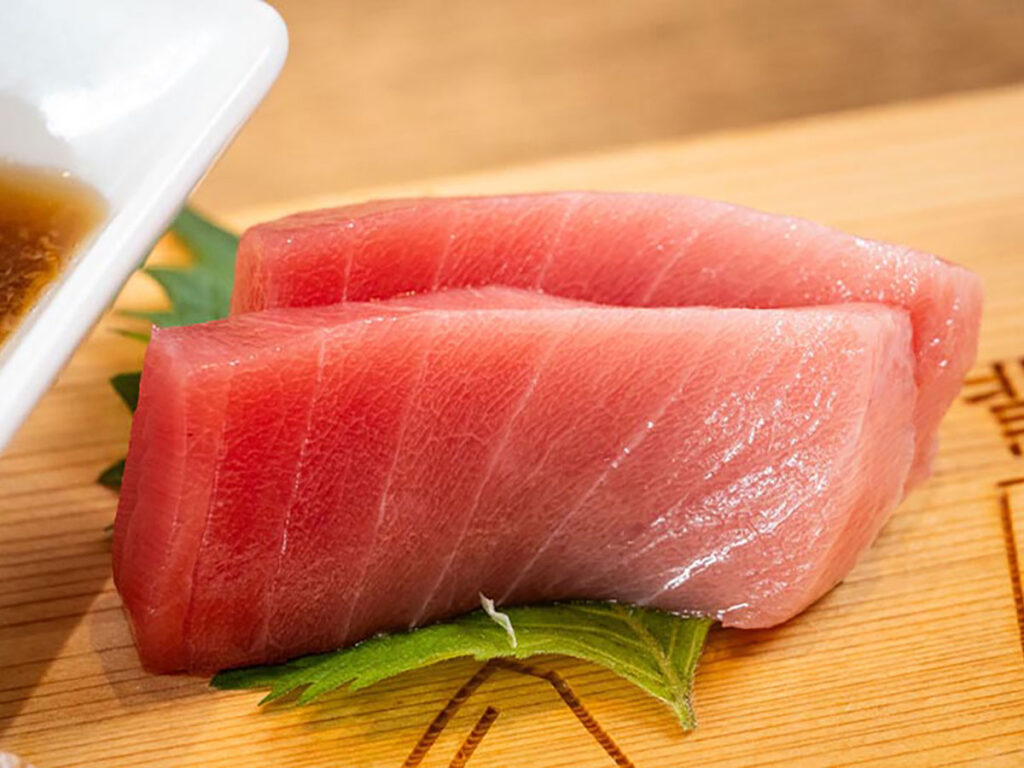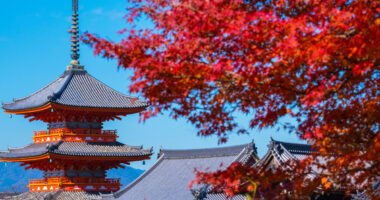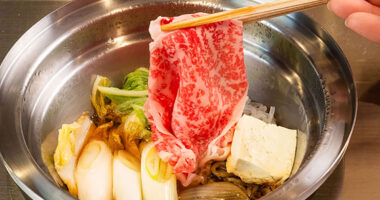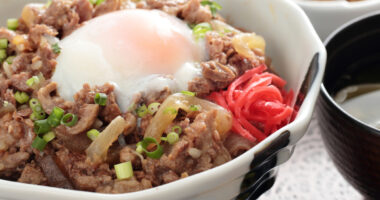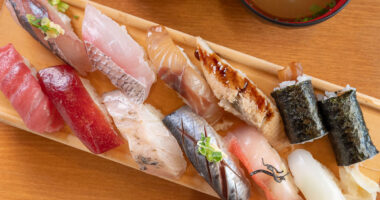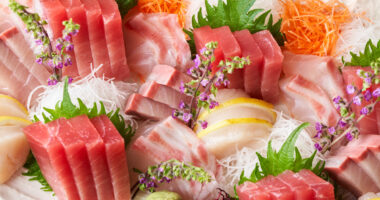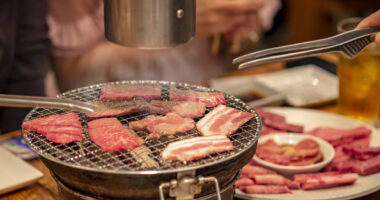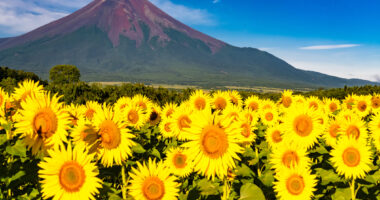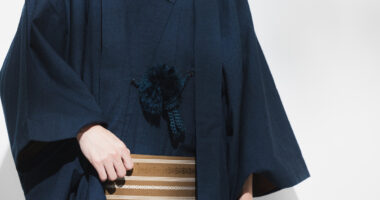Chūtoro is one of the most beloved ingredients in Japanese tuna sushi and sashimi culture, a balance between akami (lean meat) and ōtoro (extra fatty tuna). Its exquisite balance of both flavors makes it truly appealing.
With sushi’s rising popularity among international visitors to Japan, more people are captivated by chutoro’s deep flavor and texture. This article explores chutoro’s essential characteristics, its differences from akami and otoro, and the best ways to enjoy it, covering everything sushi enthusiasts need to know.
Before diving deeper into chutoro, if you’re curious about maguro types or dining options, check out this related article.
Chutoro: basic characteristics and definition
Chutoro, as mentioned above, is the part of maguro between akami and otoro, with about 15–20% fat content. Sourced from areas where muscle and fat entwine, it offers a special cut that combines akami’s umami with fat’s sweetness.
Chutoro’s hallmark is its ability to deliver akami’s iron-rich flavor and fat’s sweetness in one bite. The moderate fat woven into maguro’s muscle fibers creates a melt-in-the-mouth texture and lingering, rich umami.
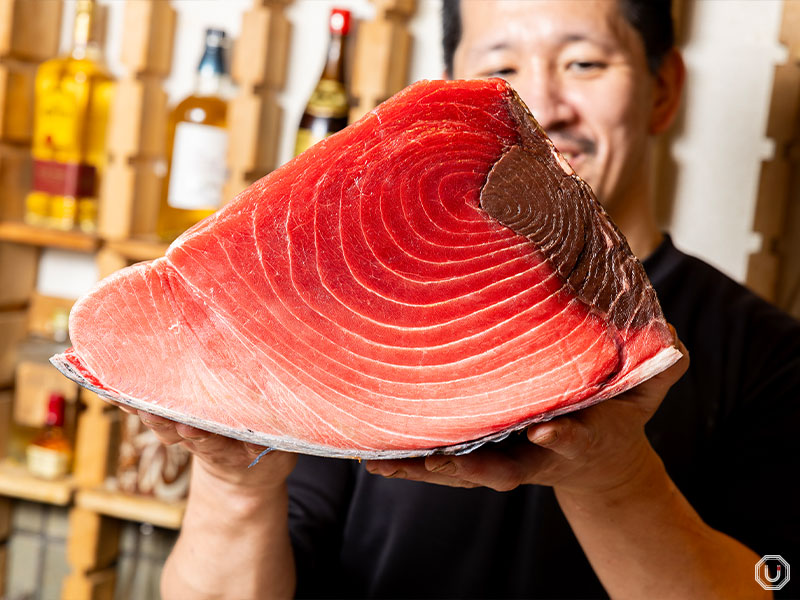
Freshly sourced wild hon-maguro at Sashimi Bar Kashigashira
Chutoro’s fat content and quality standards
Chutoro’s fat content is higher than akami’s but lower than otoro’s, making this balance a key quality criterion for sushi chefs.
Too little fat makes it taste closer to akami, while too much shifts it toward otoro. Variations in muscle fiber softness across chutoro cuts create subtle flavor differences.
Chutoro’s characteristics by cut
Chutoro from the maguro’s back, called senaka, encompasses all back-derived toro.
Compared to chutoro, it offers richer umami and robust flavor that deepens with chewing, pairing well with soy sauce and wasabi’s pungency, making it a beloved sushi staple. Belly chutoro, however, is richer in fat, offering a more melt-in-the-mouth experience.
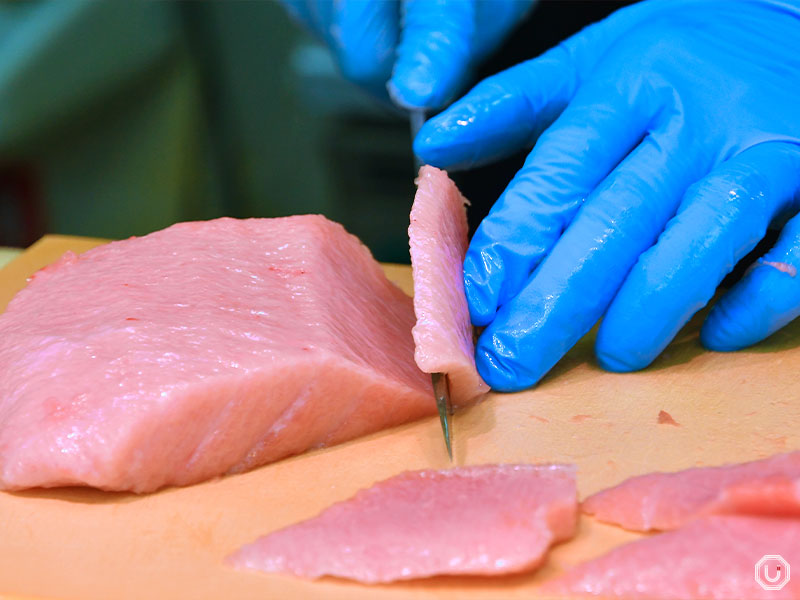
Sushi chef expertly slicing maguro at Maguroya Kurogin
Akami and otoro: Differences and comparisons
Understanding chutoro requires comparing maguro’s three main cuts: akami, chutoro, and otoro. Each offers unique flavors and textures, appealing differently to sushi lovers.
Let’s examine their differences in fat content, texture, and flavor.
Akami differences
Akami, with very low fat content, boasts a meaty flavor and firm texture. Compared to chutoro, it offers richer umami and robust flavor that deepens with chewing, pairing well with soy sauce and wasabi’s spice, making it a beloved sushi staple.
Chutoro, however, adds fat’s sweetness to akami’s umami, creating a more complex, nuanced taste and softer, melt-in-the-mouth texture.
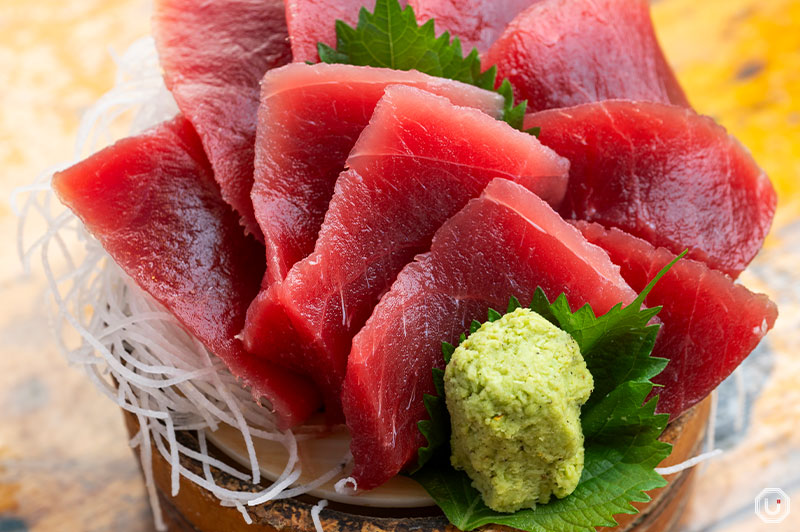
Tuna Bowl at TAKAMARU FRESH FISH SHOP
Differences with otoro
Otoro, the fattiest cut, is maguro’s most luxurious part, with an instant melt-in-the-mouth texture and rich fat sweetness.
Chutoro, less fatty than otoro but retaining akami’s flavor, offers a balanced taste that’s its greatest appeal. Those who find otoro too rich often prefer chutoro’s accessibility, contributing to its broad popularity.
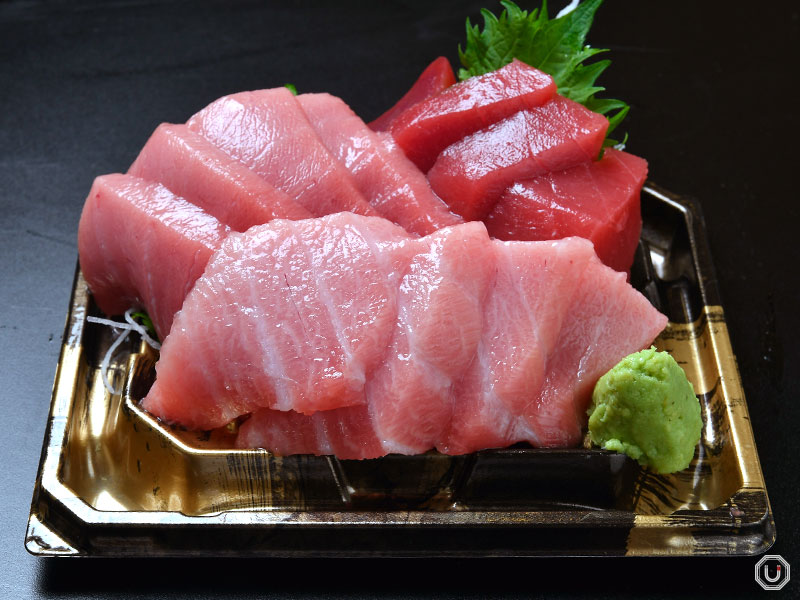
Three colors sashimi at Maguroya Kurogin
Price and rarity comparison
Typically, akami is the most affordable, followed by chutoro, with otoro being the priciest. Rarity follows the same order, with wild hon-maguro otoro being especially expensive and hard to source.
Chutoro’s balance of price and flavor makes it a popular choice at sushi restaurants.
| Cut | Fat Content | Price Range | Features |
|---|---|---|---|
| Akami | Very low | Low | Rich iron, firm texture |
| Chutoro | Moderate | Medium | Balanced flavor |
| Otoro | Very high | High | Melt-in-the-mouth, rich |
Chutoro’s rare cuts and special types
Beyond standard chutoro, rare and distinctive cuts offer unique flavors.
These scarce cuts, available in limited quantities, are prized delicacies rarely seen even at high-end sushi restaurants. Their characteristics and appeal are detailed below.
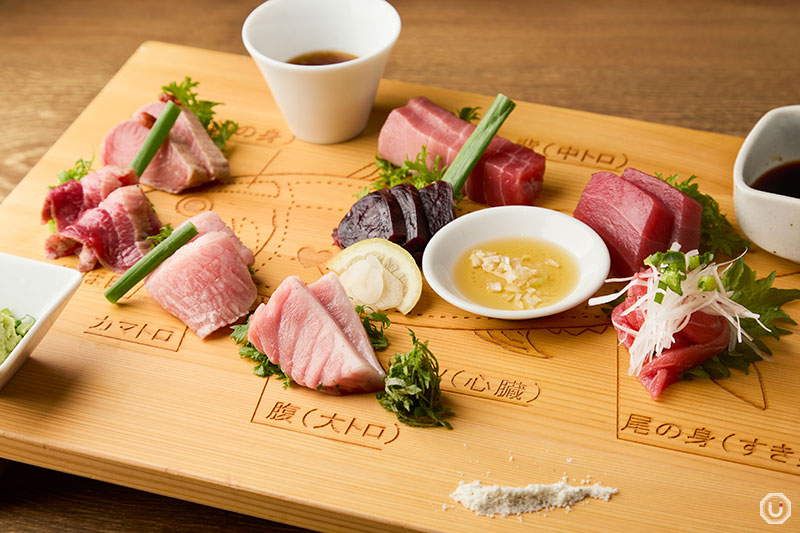
“OH! TORO KITCHEN 8 Kinds of Tuna Sashimi Assortment at OH! TORO KITCHEN
Setoro characteristics
Setoro, from between the dorsal fin muscle and subcutaneous fat, is an ultra-rare cut, yielding only hundreds of grams per kuro-maguro. Its blend of akami’s tangy aroma and fat’s sweetness creates a complex, nuanced flavor unique among chutoro cuts.
Setoro’s appeal lies in its concentrated umami from active muscle tissue, balanced by subcutaneous fat, offering a distinct texture and taste. Rarely available even at upscale sushi restaurants, it’s a must-try if encountered.
Flavor variations by cut
Chutoro’s flavor varies by location. Back-side chutoro is muscular with a firmer bite, while belly-side chutoro is fattier and melts more readily. Head-proximate chutoro has robust umami, while tail-end cuts are milder.
Understanding these differences enhances your sushi experience. Skilled chefs may select specific chutoro cuts based on your preferences, so don’t hesitate to ask.
Savoring chutoro: Best practices and sushi enjoyment
To enjoy chutoro at its best, understanding proper temperature control and eating techniques is crucial.
In sushi, the balance of shari (vinegared rice) and topping temperature significantly impacts flavor, making it essential to choose a restaurant that serves chutoro in its ideal state.
Ideal temperature and timing
For sushi, chutoro is best with slightly warm shari and room-temperature topping. This contrast allows the fat to melt gently, maximizing texture and flavor. Eating immediately after the chef prepares it ensures this optimal balance.
Consume chutoro in one bite to fully savor its fat; biting it in half diminishes the experience. Use minimal soy sauce to preserve chutoro’s natural flavor.
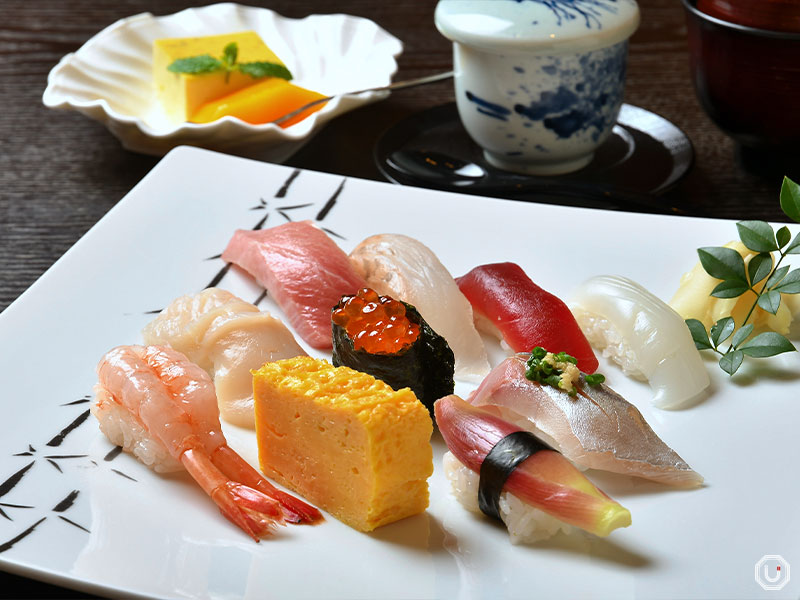
Weekday lunchtime exclusive Seasonal Nigiri at Sushiiwa
Soy sauce and wasabi usage
Chutoro’s moderate fat requires careful soy sauce application. Dip only the topping side lightly, avoiding the shari. Wasabi is often pre-added by chefs in the right amount, so additional wasabi should be minimal.
Chutoro’s fat sweetness, soy sauce’s saltiness, and wasabi’s sinus-clearing kick harmonize for a profound sushi experience. Start with light seasoning to find your preferred balance.
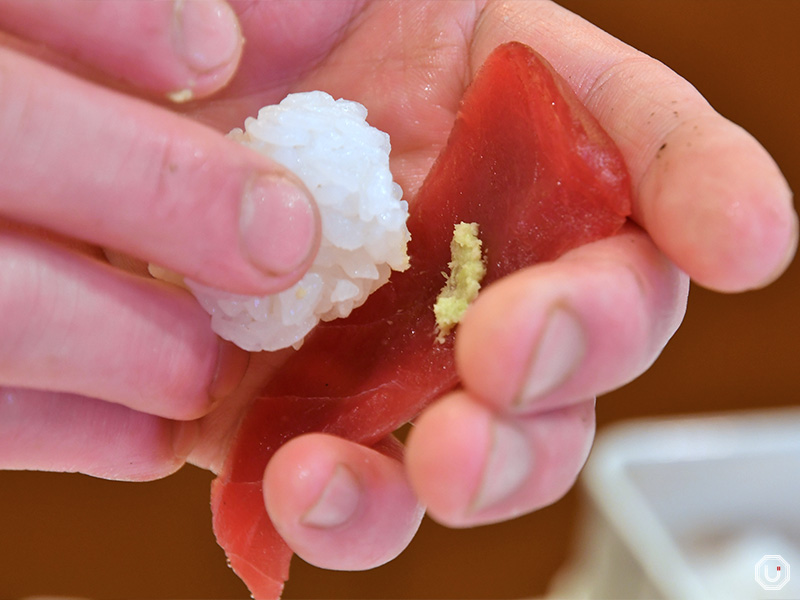
Sushi chef preparing sushi at Sushiiwa
Pairing with other ingredients
While chutoro shines alone, combining it with other ingredients enhances the experience. For example, toro-taku maki (a sushi roll of toro and takuan pickled daikon radish) balances chutoro’s richness with takuan’s tanginess.
The order of toppings matters. Eating chutoro after mild whitefish heightens its umami. Afterward, daikon or gari (pickled ginger) cleanses the palate.
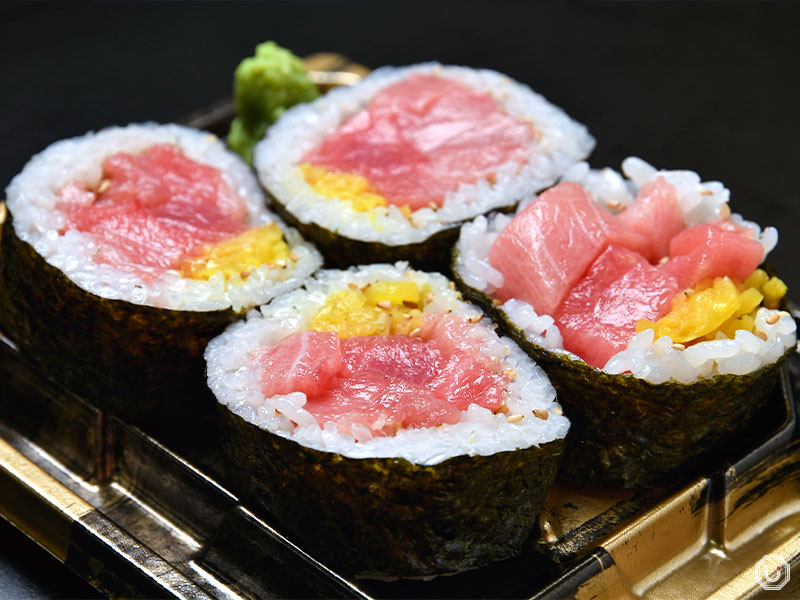
Tuna Roll at Maguroya Kurogin
Chutoro’s origins and peak seasons
Chutoro’s flavor is heavily influenced by its origin and harvest time.
Japan’s diverse fishing grounds produce maguro with unique traits. Understanding these origins and peak seasons enhances your ability to enjoy the best chutoro.
Major fishing grounds and their traits
Japan’s key maguro regions—Hokkaido Prefecture, Aomori Prefecture, Wakayama Prefecture, and Miyazaki Prefecture—yield distinct flavors. Hokkaido’s Uchiura Bay (also known as Funka Bay) produces firm, fat-rich maguro from cold waters. Aomori’s Oma and Minmaya yield robustly flavored maguro from Tsugaru Strait’s rough currents.
Wakayama’s maguro, raised in the warm Kuroshio Current, offers refined fat quality. Miyazaki’s Nobeoka produces fat-rich maguro from southern warm seas.
Notable fishing grounds
Oma in Aomori, famed for ‘Oma maguro,’ is a premier maguro hub, with fish honed by Tsugaru Strait’s currents for concentrated umami. Toi in Shizuoka, near Tokyo, supplies fresh maguro to markets.
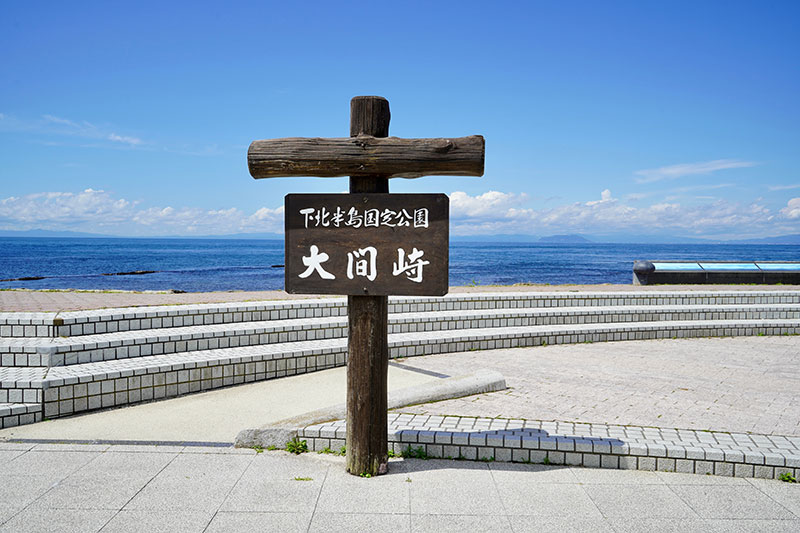
Photo for illustrative purposes
Island waters like Sado (Niigata Prefecture) and Iki (Nagasaki Prefecture) produce fat-rich maguro, ideal for high-quality chutoro, due to abundant feed along migration routes. These conditions foster excellent chutoro.
| Region | Features |
|---|---|
| Oma (Aomori) | Firm, umami-rich |
| Funka Bay (Hokkaido) | Fat-rich |
| Nobeoka (Miyazaki) | High-quality fat |
| Iki (Nagasaki) | High-quality chutoro |
Peak seasons and flavor changes
Maguro’s peak season is typically fall to winter, when chutoro’s fat content peaks, especially from November to February as maguro store fat for winter.
In spring and summer, spawning reduces fat, making akami more prominent. However, advanced aquaculture ensures consistent chutoro quality year-round. Savoring seasonal flavor shifts is a deep aspect of sushi culture.
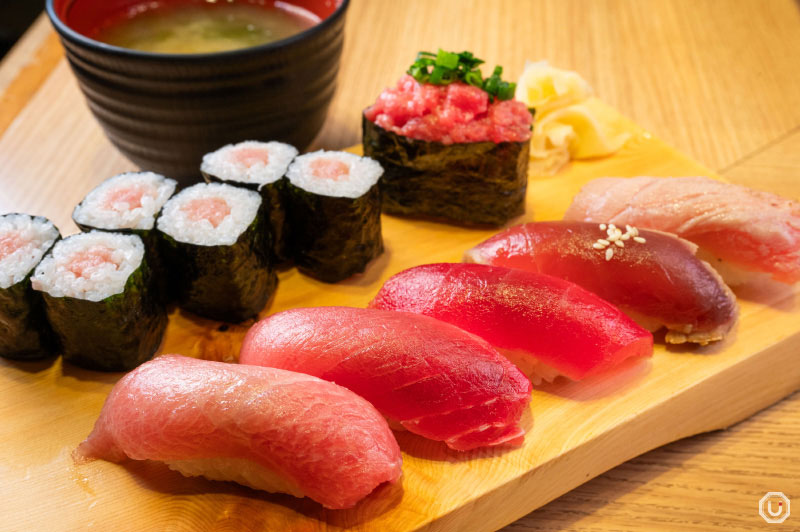
Tuna Sushi Variety Platter at Maguro Ichidai
Summary
Chutoro, positioned between maguro’s akami and otoro, is a special cut whose complex flavor—blending robust umami and fat sweetness—is its greatest charm, beloved by sushi enthusiasts.
From rare cuts like setoro to varied regional flavors, chutoro offers diverse tastes and textures. Proper preparation and eating techniques unlock its full potential, enriching your sushi experience.
